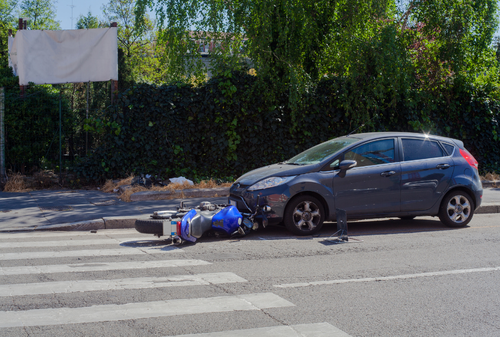Rear-end collisions are among the most common types of traffic accidents, often resulting in damage and injuries. The aftermath can be extremely confusing, especially when it comes to assigning fault.
While the presumption often falls on the rear driver, understanding the factors that determine fault can be crucial for navigating insurance claims and potential legal action. It is important to note that determining fault is not always straightforward and depends on an array of factors.
Whether you were the one the lead driver or the one rear-ended, it is advisable to seek specific advice about your situation from an experienced car accident attorney near you.
If you are in Aiken, your best bet would be the team at Johnson, Johnson, Whittle, Lancer, & Staggs. Our seasoned car accident lawyers can help you understand your rights and pursue the compensation you need after a rear-end collision.
Understanding Rear-End Collisions
Rear-end collisions typically occur when the following driver fails to stop or slow down in time to avoid hitting the vehicle in front. Common causes include distracted driving, speeding, tailgating, or sudden stops by the front vehicle.
According to the National Highway Traffic Safety Administration, rear-end collisions account for nearly 30% of all traffic accidents, highlighting their frequency and potential severity.
The General Presumption of Fault
The law generally holds the rear driver responsible for maintaining a safe following distance. This means that in most rear-end collisions, the presumption of fault lies with the driver who struck the vehicle in front.
The rationale behind this principle is simple: the driver behind has more control over their speed and stopping distance. Their responsibility is to react in a timely manner to changes in traffic flow initiated by the lead vehicle.
Statistics from the National Highway Traffic Safety Administration (NHTSA) illustrate this point. In 2022, rear-end crashes accounted for nearly half (49%) of all crashes resulting in injuries.
Distracted driving, following too closely, and speeding are all common factors in these accidents, highlighting the driver’s control over maintaining a safe distance.
Exceptions to the Rule
While the rear driver is usually at fault, there are exceptions. The lead vehicle may be at fault in certain situations, such as:
(i) Sudden Reverse
If the front driver suddenly reverses into the rear vehicle, the lead driver may be held responsible.
(ii) Faulty Brake Lights
If the lead vehicle’s brake lights are not functioning, the rear driver may not have been given adequate warning to stop.
(iii) Reckless Driving
If the front driver behaves recklessly, such as by cutting off the rear driver and then braking suddenly, they might share the blame.
Shared Fault & Modified Comparative Negligence in South Carolina
It is important to note that there are scenarios where both drivers may share fault. South Carolina follows a modified comparative negligence system for car accidents, including rear-end collisions.
Under this system, as long as the injured party is found to be less than 51% at fault for the accident, they can still recover compensation for their damages. However, the amount of compensation they receive will be reduced by their percentage of fault.
For example, if you’re found to be 30% at fault for a rear-end collision in South Carolina and your total damages are $10,000, you would be eligible to recover 70% of those damages, which is $7,000.
Determining Fault in Specific Scenarios
Determining fault comes down to collecting and analyzing evidence. Important steps include:
(i) Evidence Collection
This involves taking photographs of the scene, including damage and injuries, gathering witness statements, and securing any available dashcam footage.
(ii) Police Reports
A police report provides an official account of the accident, often including the officer’s opinion on fault based on the evidence collected.
(iii) Insurance Investigations
Insurance companies also conduct their own investigations, reviewing the damage, statements, and other evidence to determine fault.
What are the Consequences for the Party at Fault?
The at-fault driver faces several legal and financial consequences. They may be liable for damages, including vehicle repairs, medical expenses, and other losses suffered by the other party.
Additionally, being found at fault typically leads to increased insurance premiums and can affect the driver’s record.
What Should You Do Following a Rear-End Collision?
If you’re involved in a rear-end collision, ensure you do the following:
- Ensure everyone involved is safe, call emergency services if needed, and move vehicles to a safe location if possible.
- Document the scene thoroughly, including taking photos of all vehicles involved, the accident site, and any visible injuries.
- Do Not Admit Fault! (This can include even saying ‘sorry’)
- Consider consulting with a legal professional, especially if there are injuries or significant damages.
Get the Right Legal Representation for a Rear-End Collision Case!
While the general rule is that the rear driver is at fault in a rear-end collision, various factors can shift or share the blame. The team at JJWLS can handle your case and ascertain you receive fair treatment and compensation.
We work on a contingency fee basis for our personal injury cases, meaning you don’t have to pay a dime unless we win your case. Call Johnson, Johnson, Whittle, Lancer, & Staggs at (803) 649-5338 today to schedule a free case evaluation.


